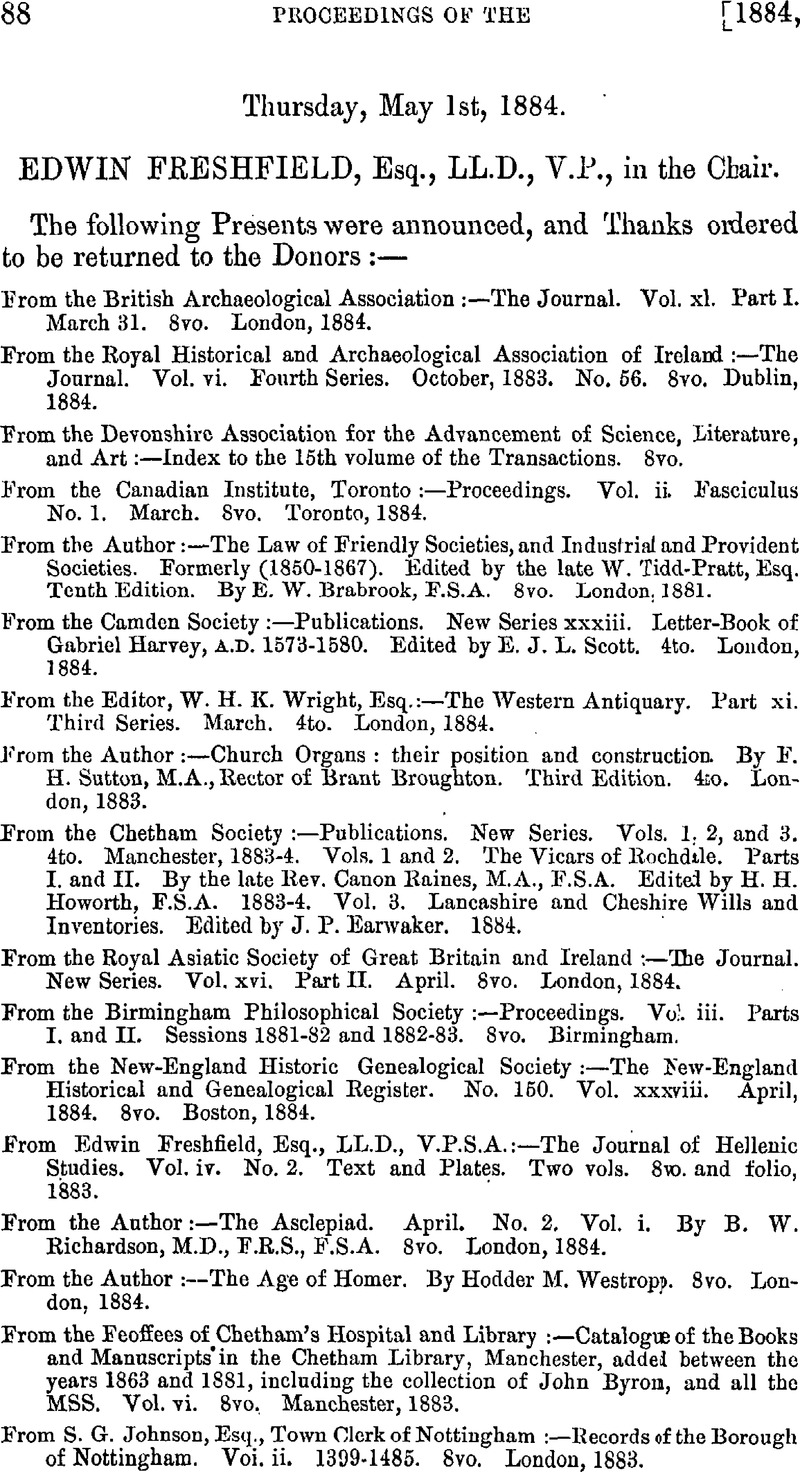No CrossRef data available.
Published online by Cambridge University Press: 10 May 2010

page 92 note * Engraved in his Catalogue, 1854, p. 6.
page 94 note * For an account of the Fraternity of “Bons Hommes,” (or Good Men, called the Gaunts) whose chapel is now called St. Mark's or the Mayor's Chapel, see Bristol—Past and Present, chap. xv. “Maurice de Berkley, son of Robert, assumed his mother's name of Gaunt. Maurice, for services rendered to the king in France, A.D. 1214, was granted a charter of the manor of Barrow to retain during his life, which manor had been conceded to him by Eva de Gournay, his sister.” (See Proceedings of Archæological Institute, York, vol. iii. p. 80.) Leland observes that the governor of the house was sometimes called prior, and the house itself a priory of the Order of St. Augustine, and it is so called often in the Gaunt's Deeds. (See Barrett, p. 363.)
page 97 note * This expression is very uncommon, but a conversion of tenure from bond to free is clearly intended, and the contracted word can scarcely have any other meaning than that here assigned to it.
page 98 note * See Norf. and Norw. Arch. Collections, i. 316.
page 98 note † Testam, Eborae, Surtecs Soc. i. 57.
page 99 note * Dugdale, Bar. i. 275, by mistake calls the Bishop Richard.
page 99 note † 42 Edw. III. No. 48, Dugdale.
page 100 note * There was a further connection between the two families, for smother sister of Duke Henry, namely, Eleanor of Lancaster, had married Richard (II.) Earl of Arundel, who, as will appear from what has already been said, was first cousin to Bishop Percy's father.
page 100 note † See Mon. iii. 99, and Yates's Hist, of St. Edmundsbury, there cited.
page 101 note * The legend has been misread in the Monasticon.
page 102 note * hod. Fressingfield, hundred of Hoxne, three miles or so south of Mendham, which lies oil the Waveney river, nearly opposite liarleston, on the Norfolk side.
page 103 note * See Blomefield's Norf. v. 372, 375, 8vo. edition.